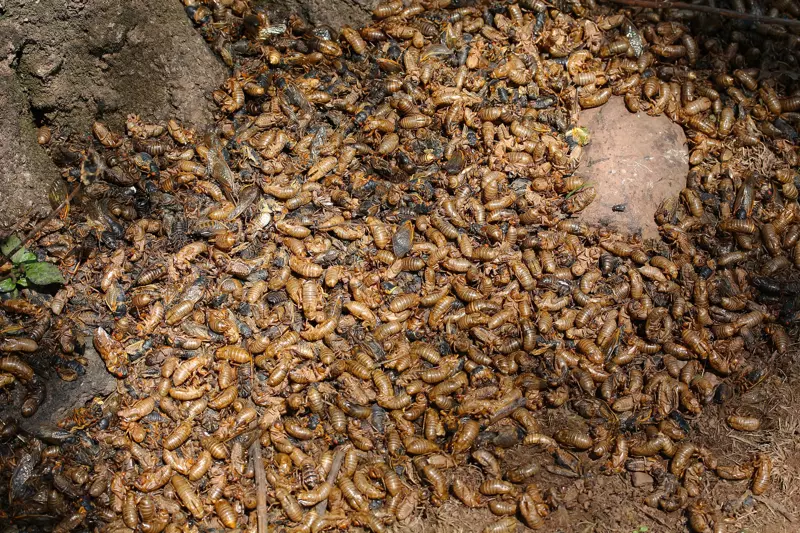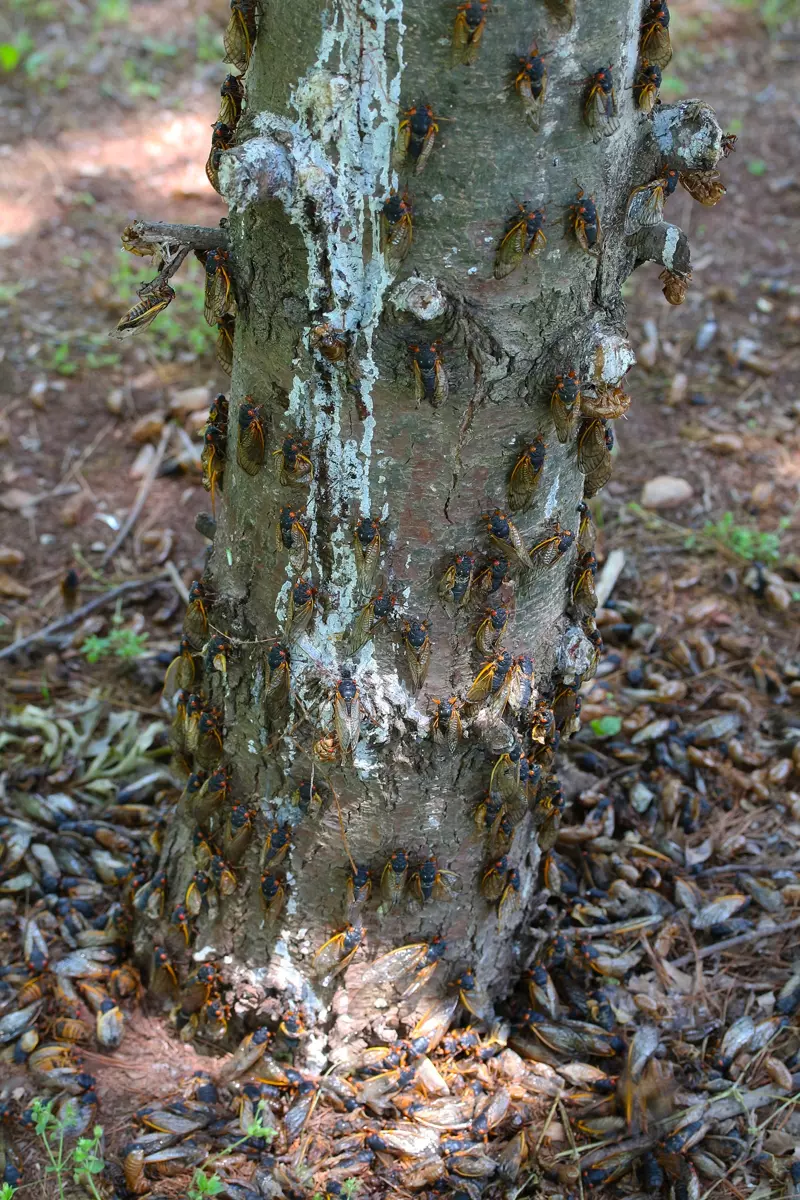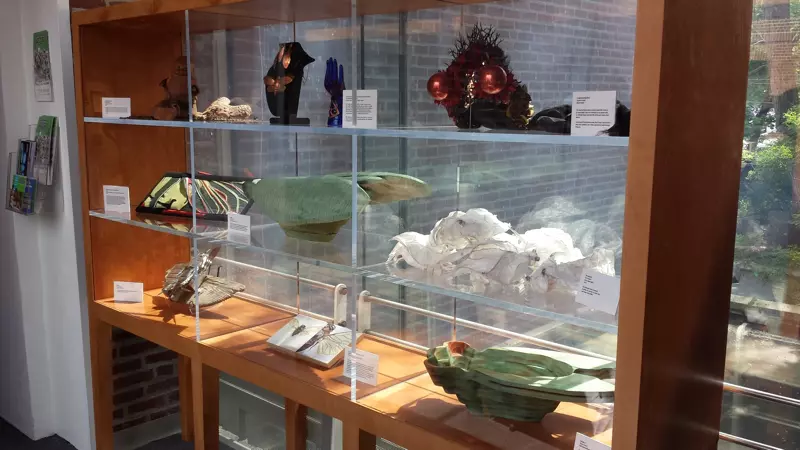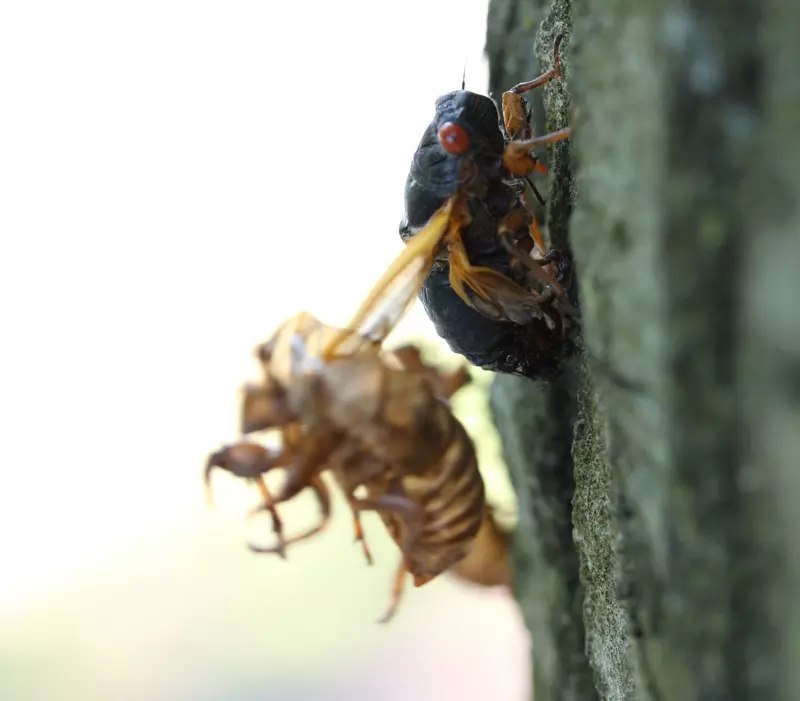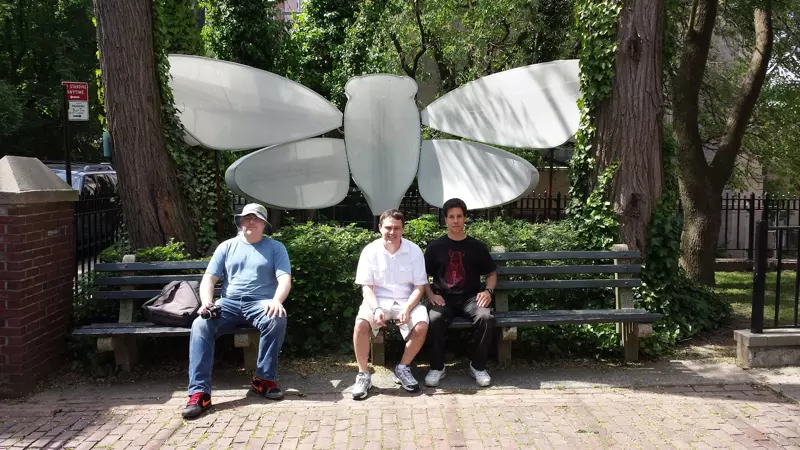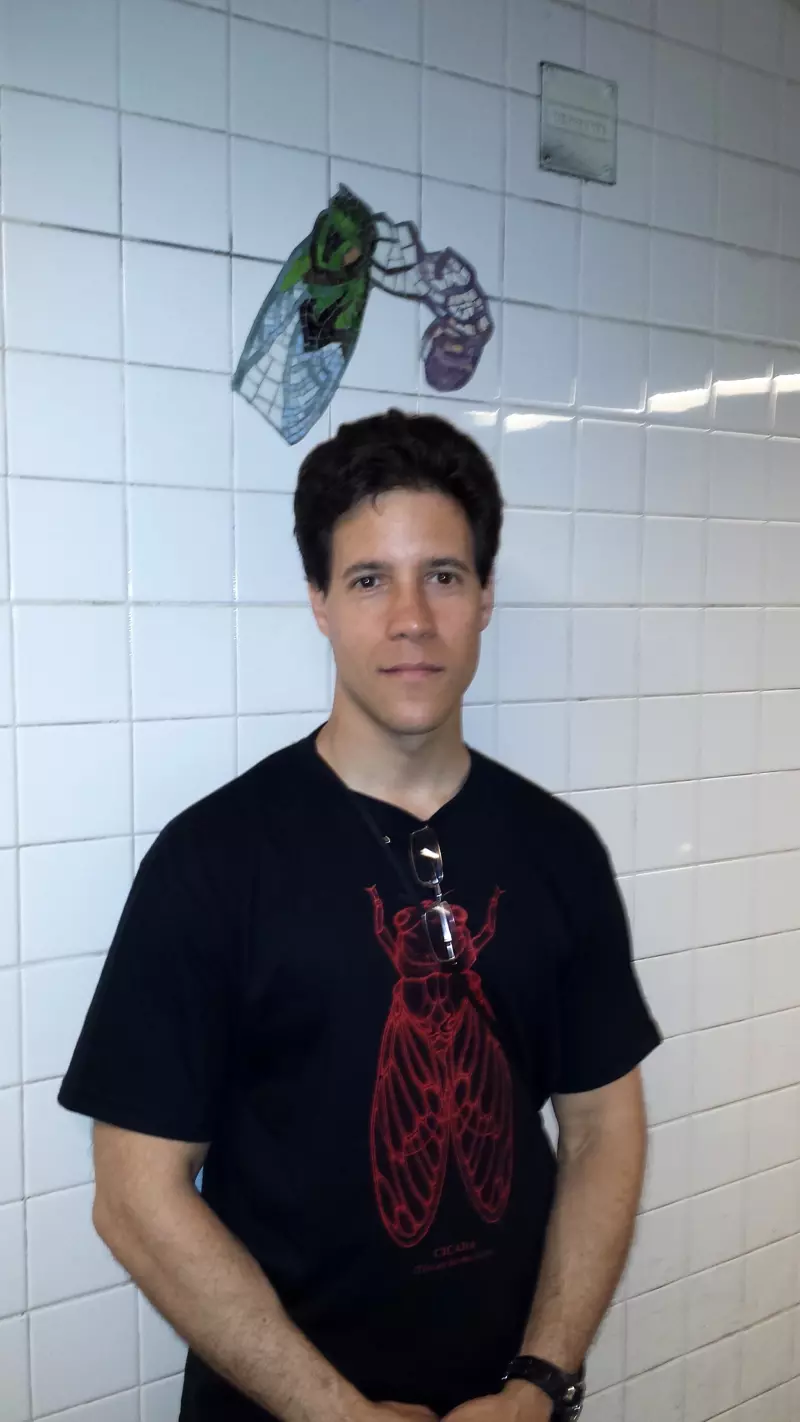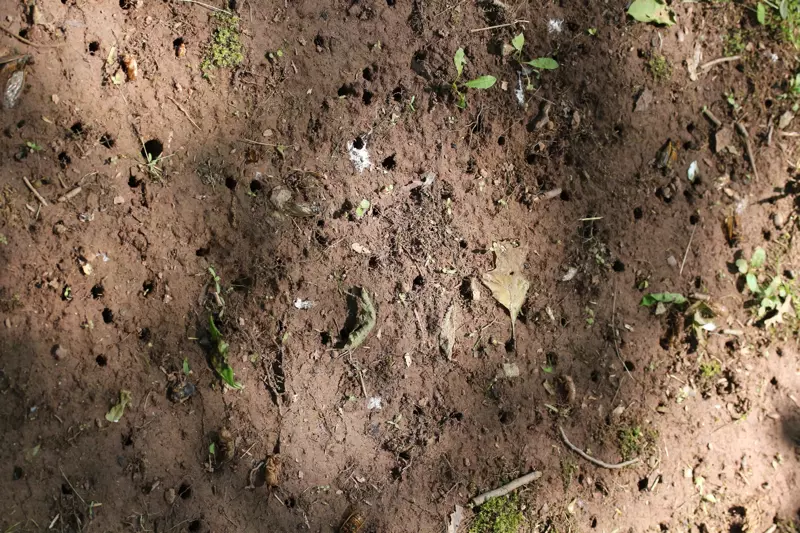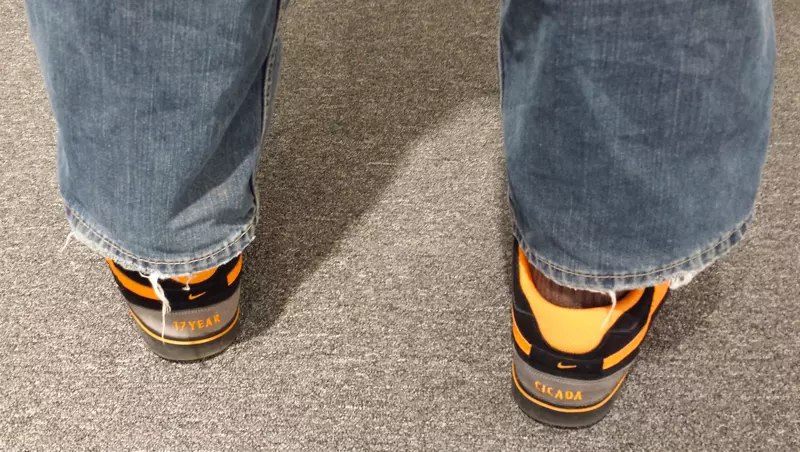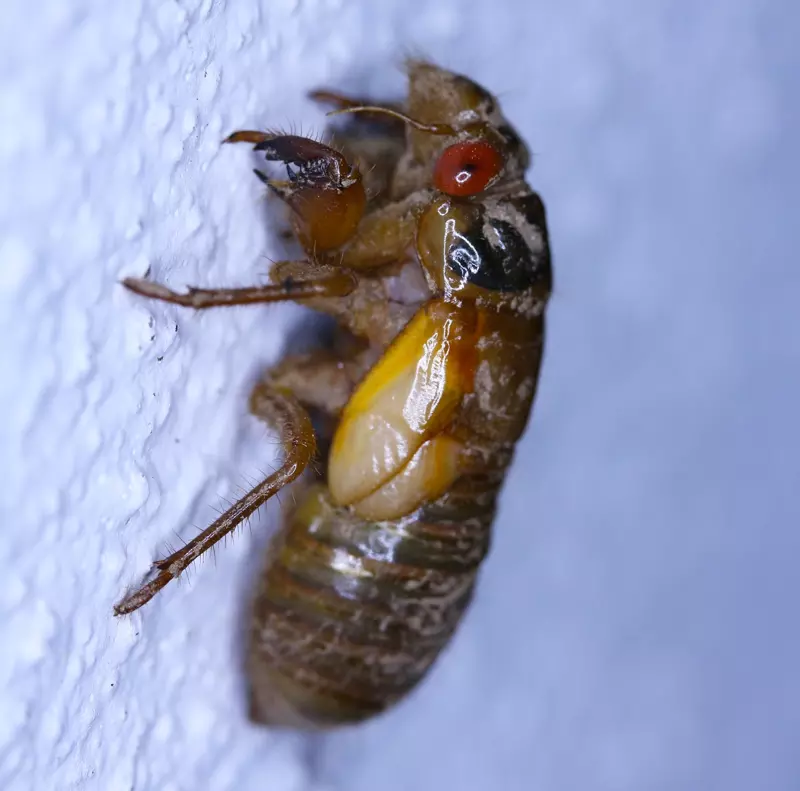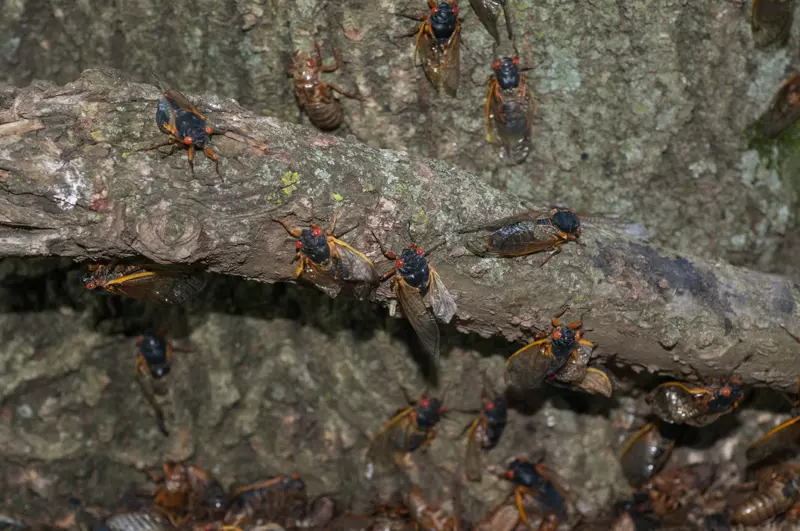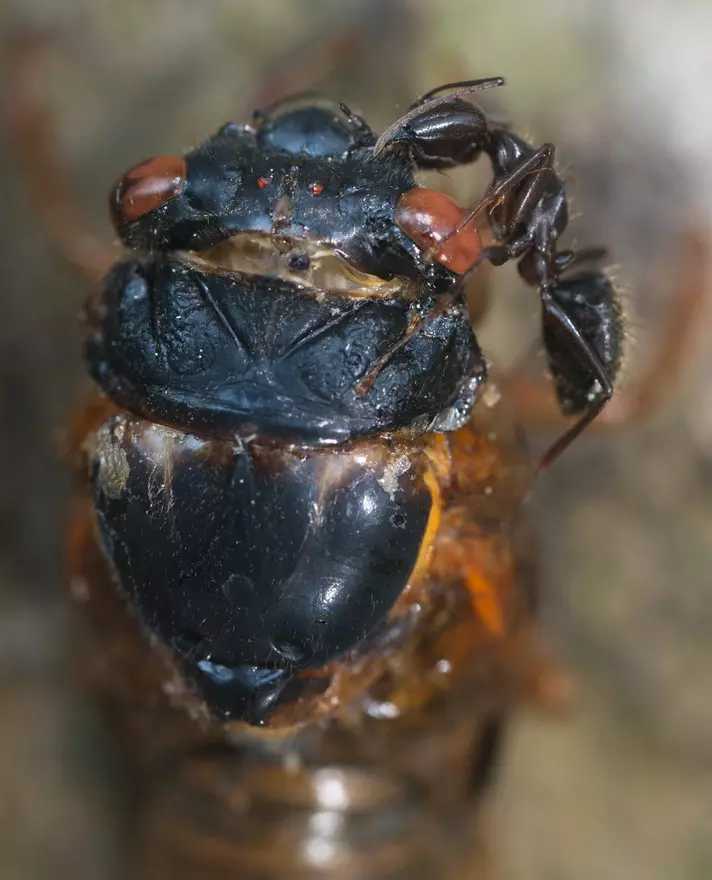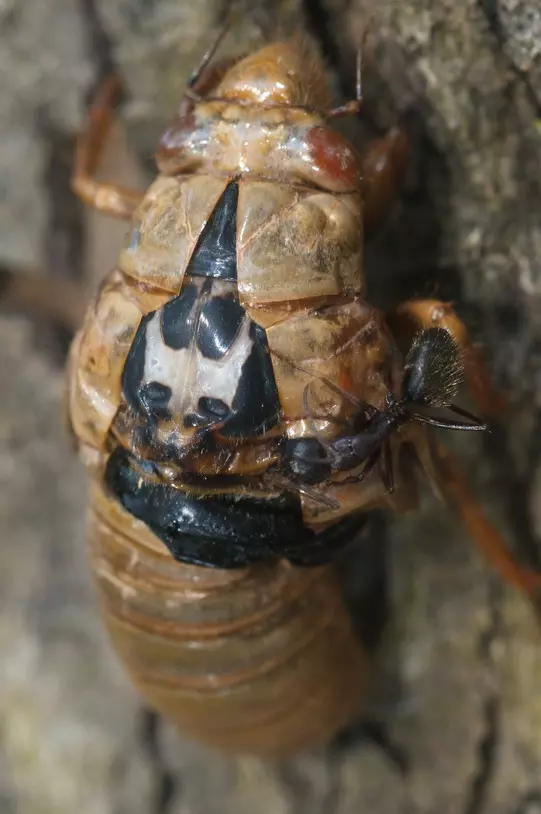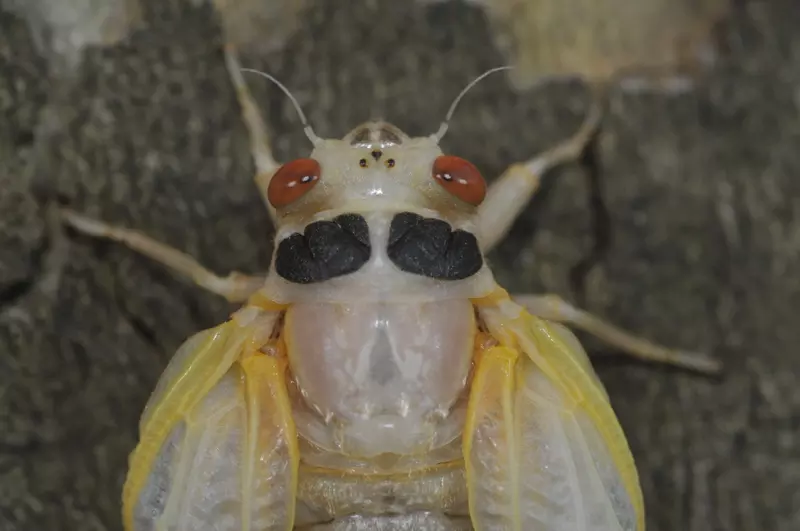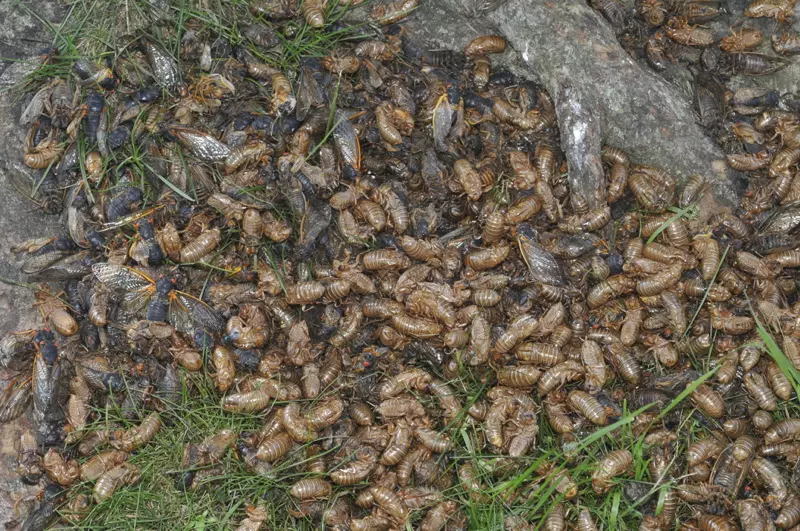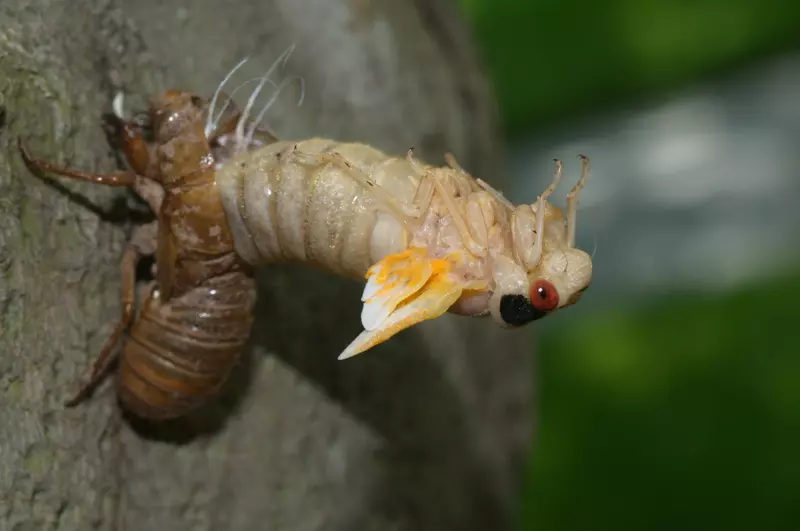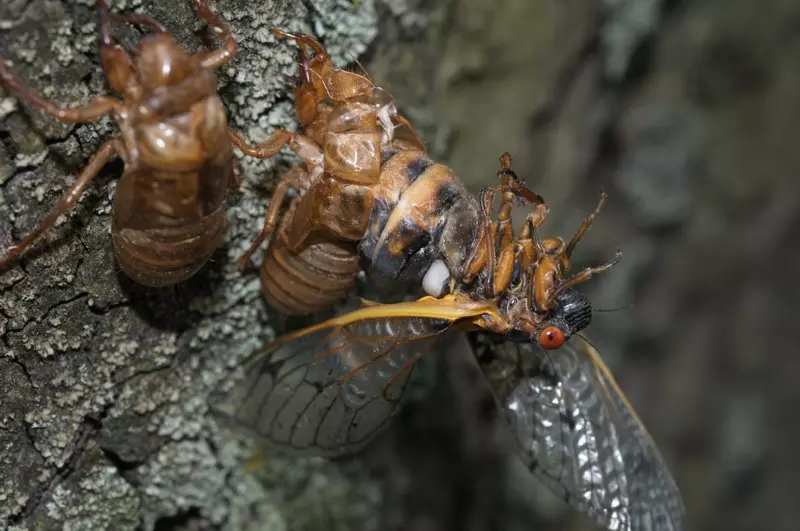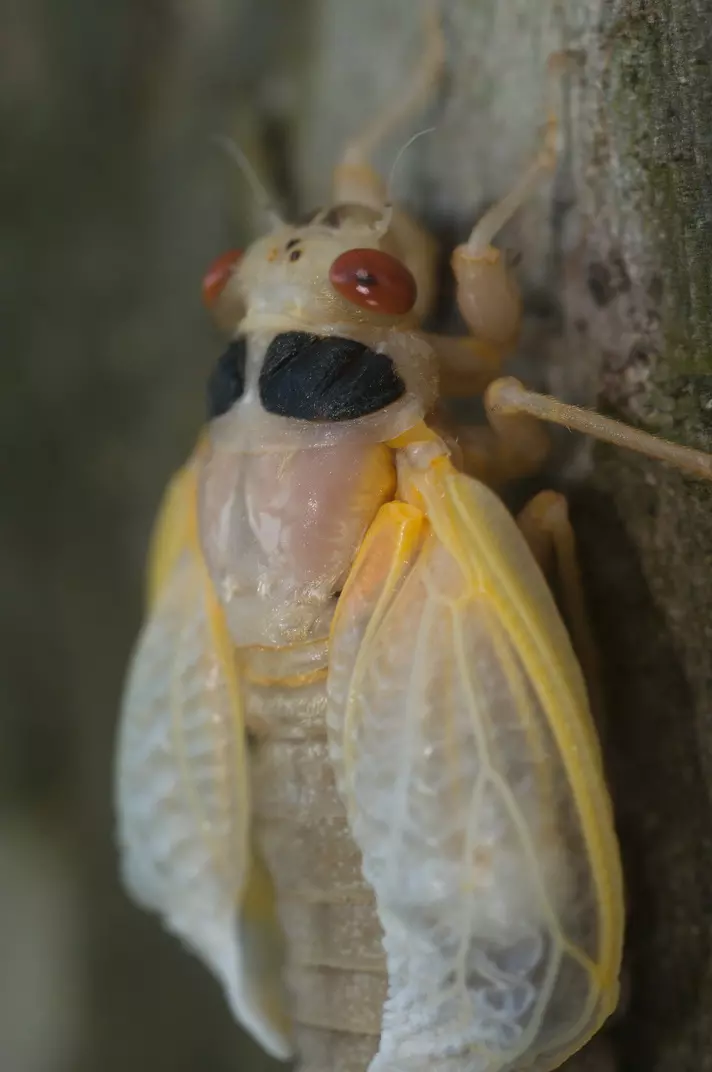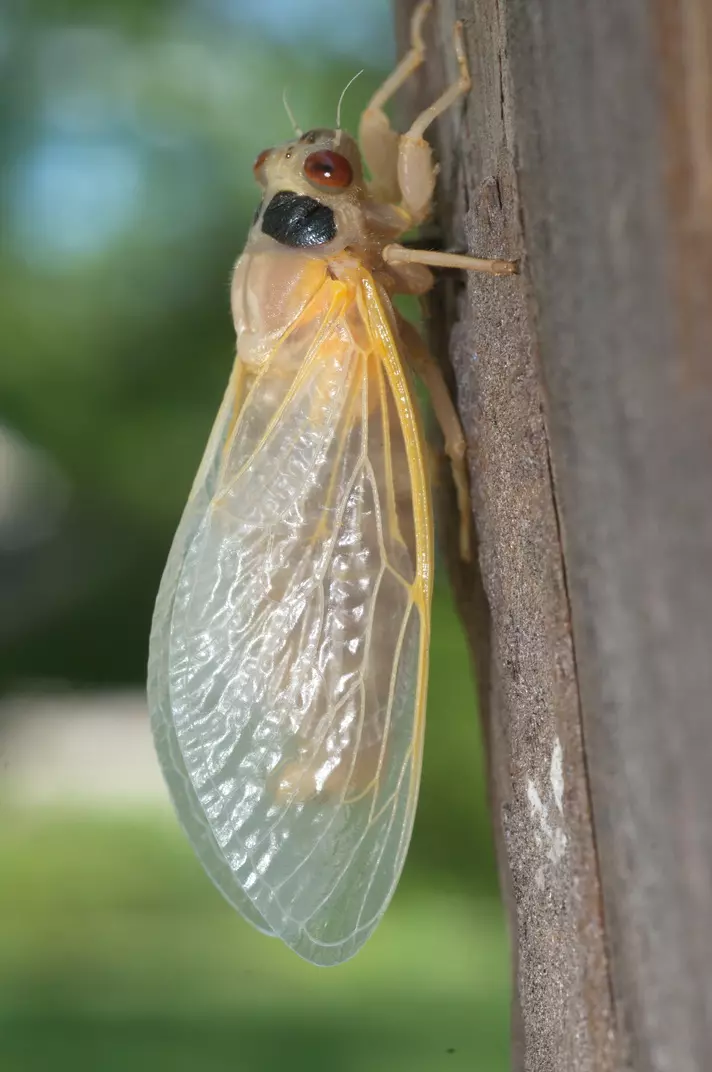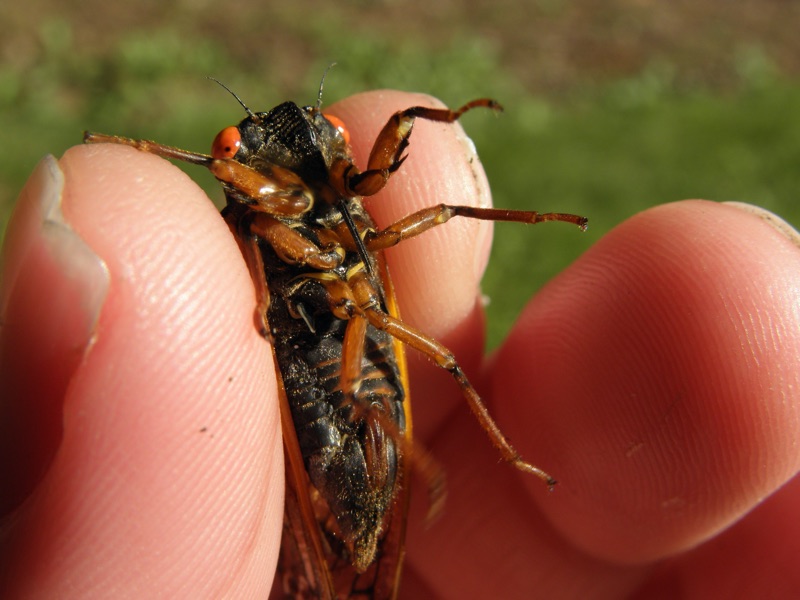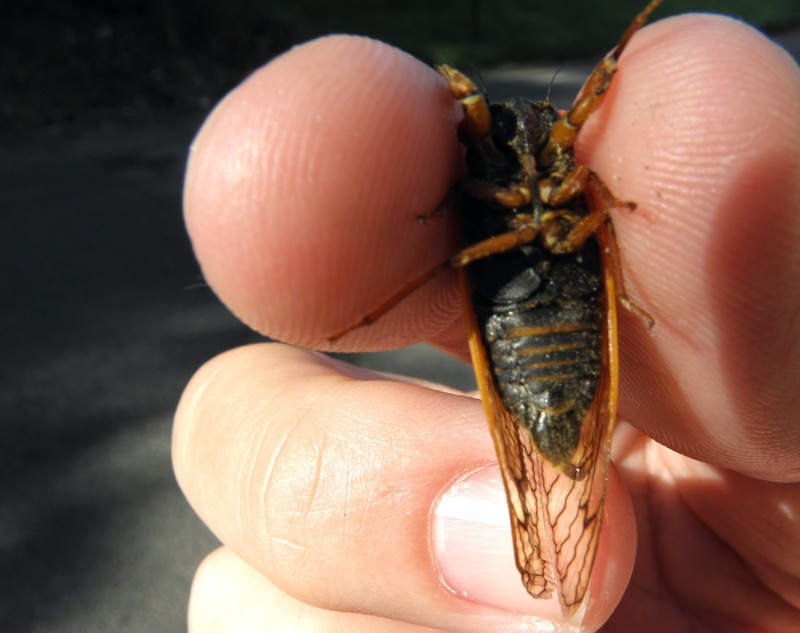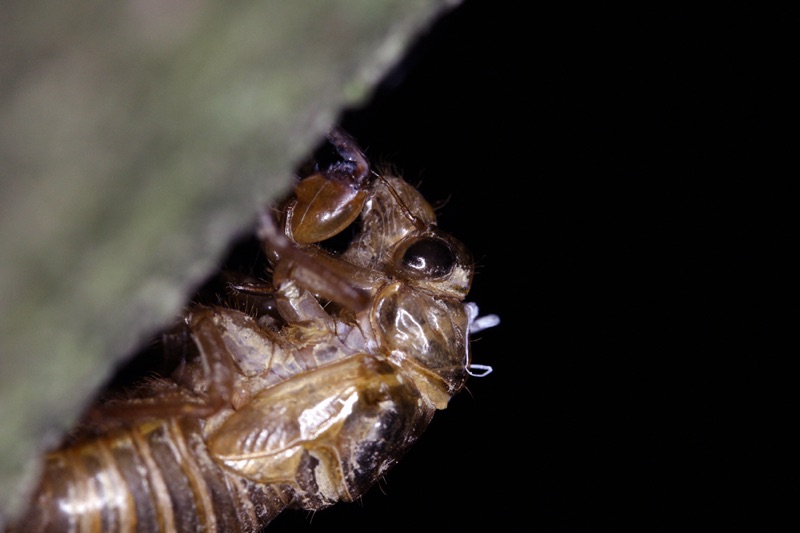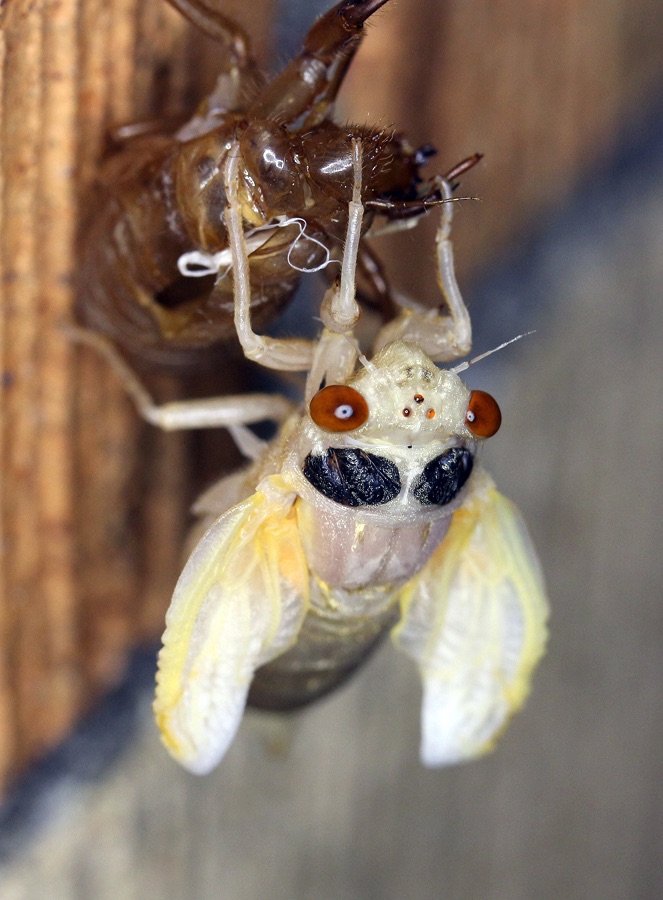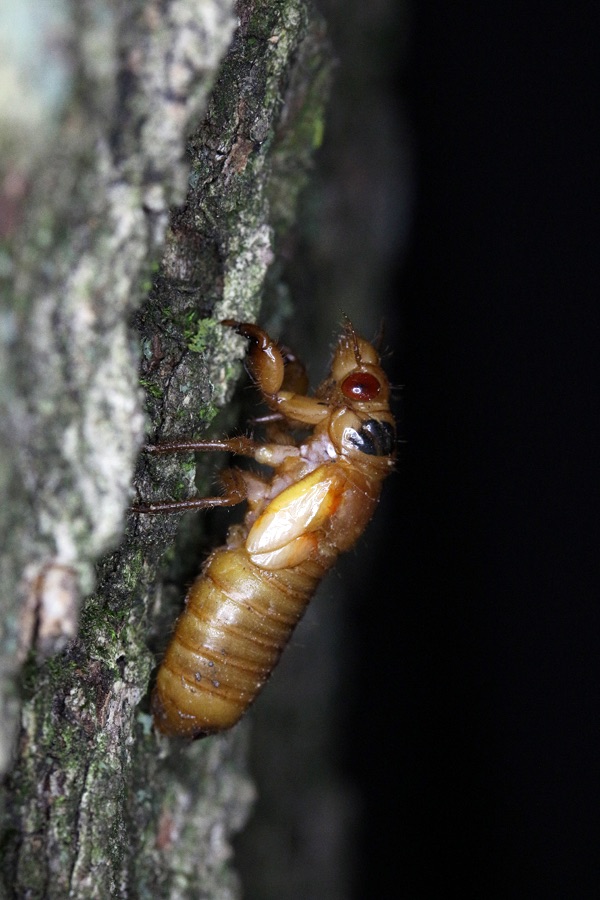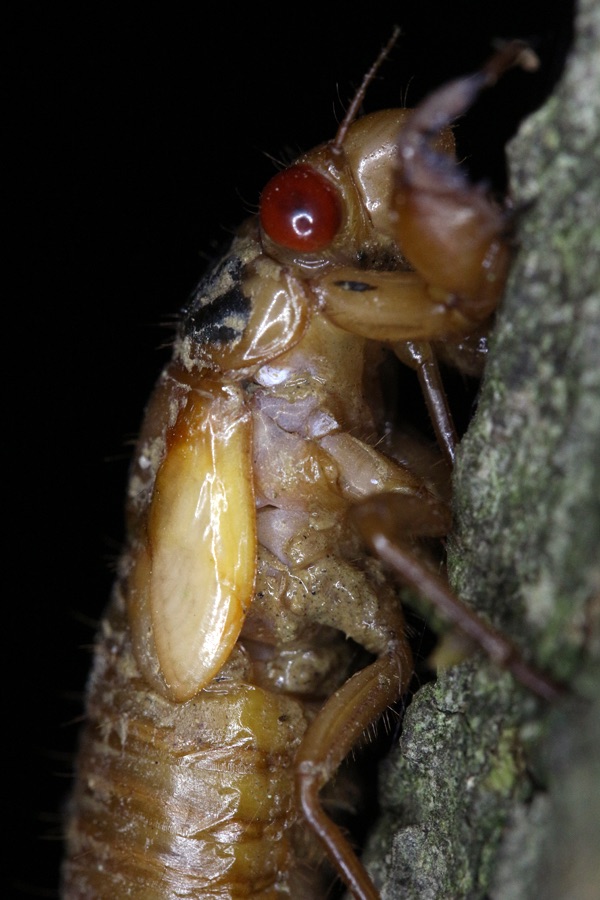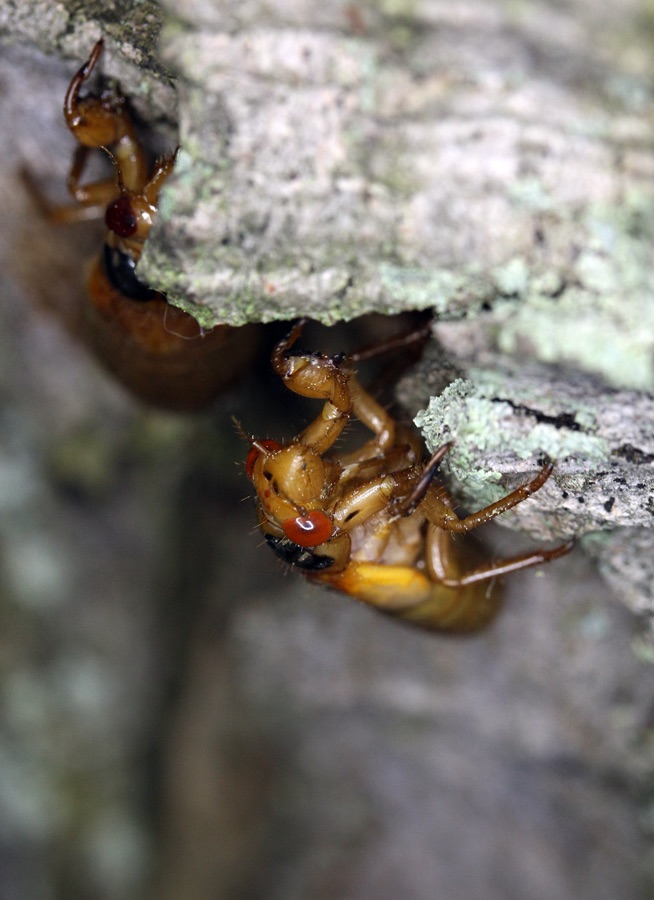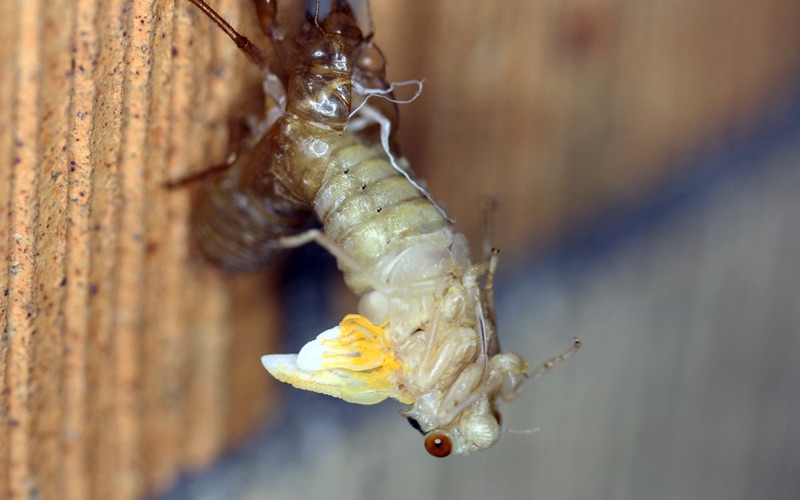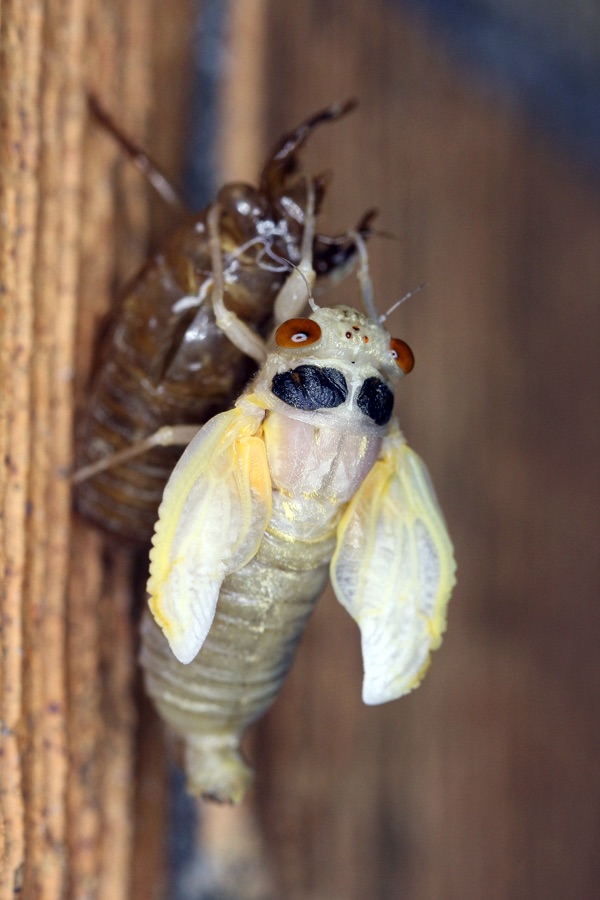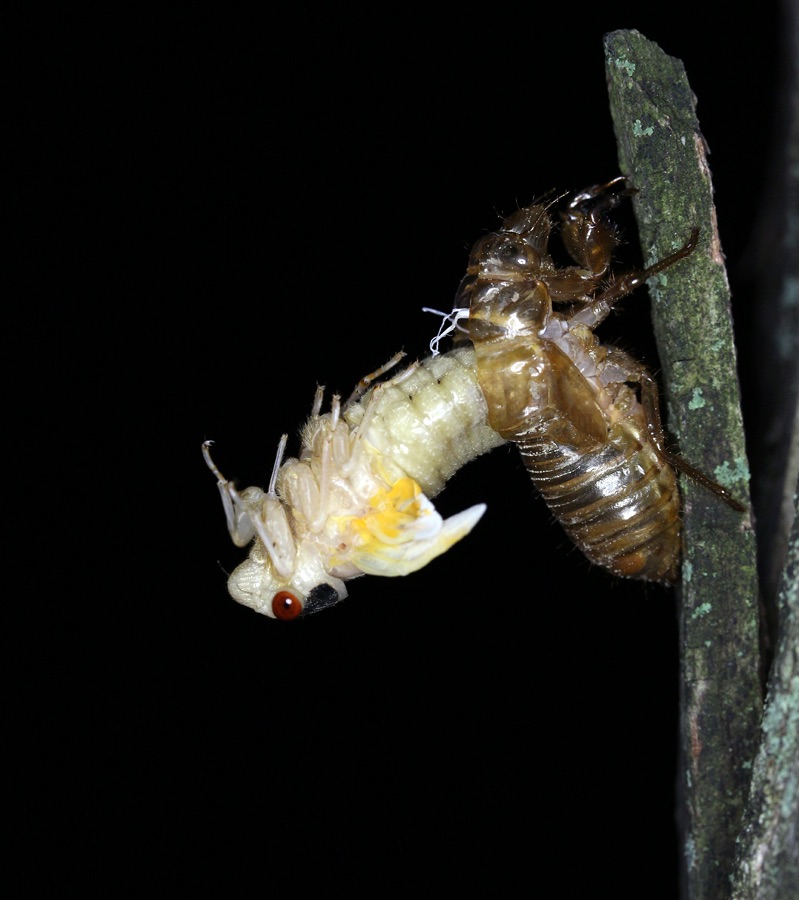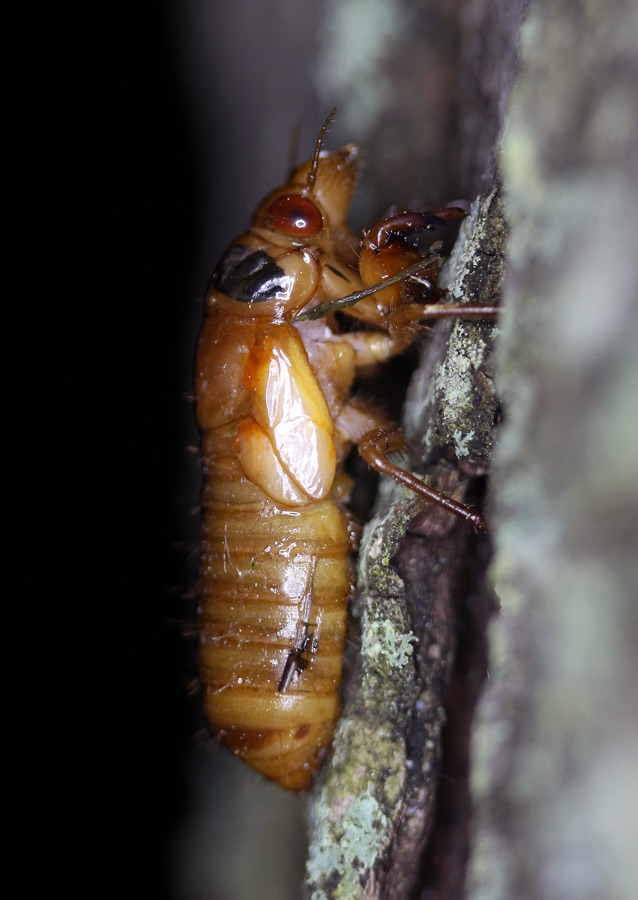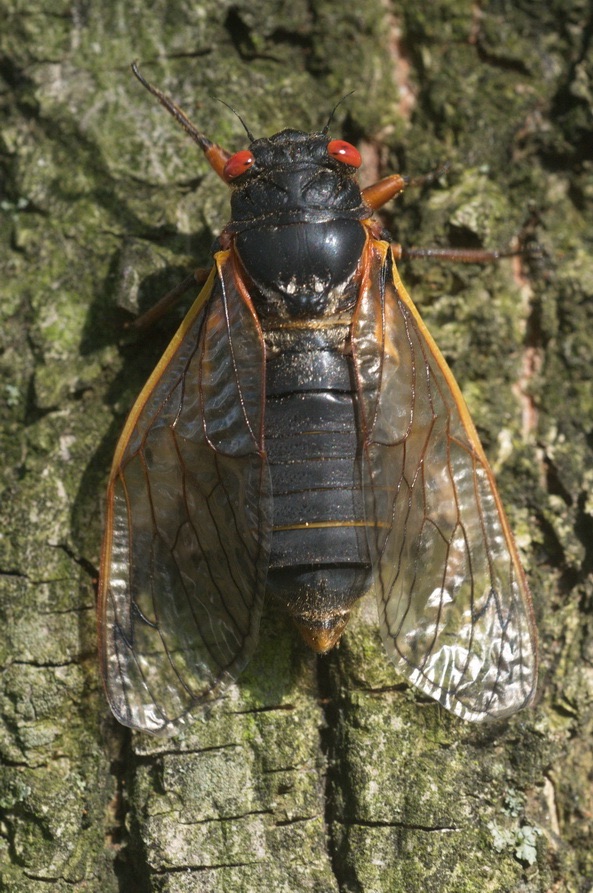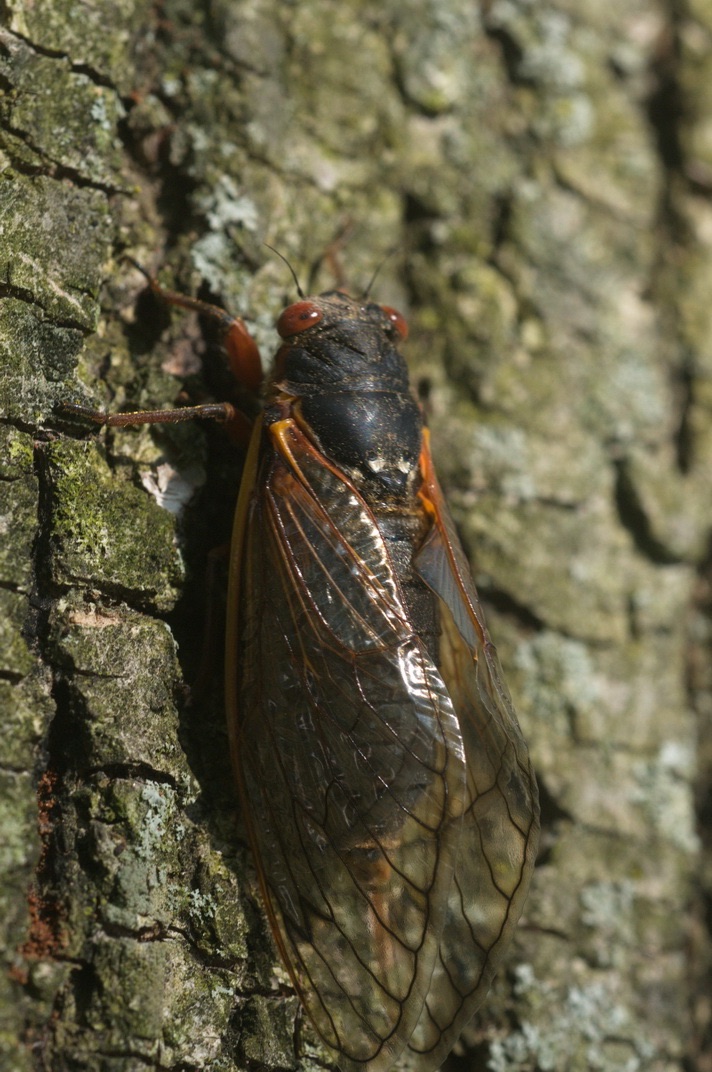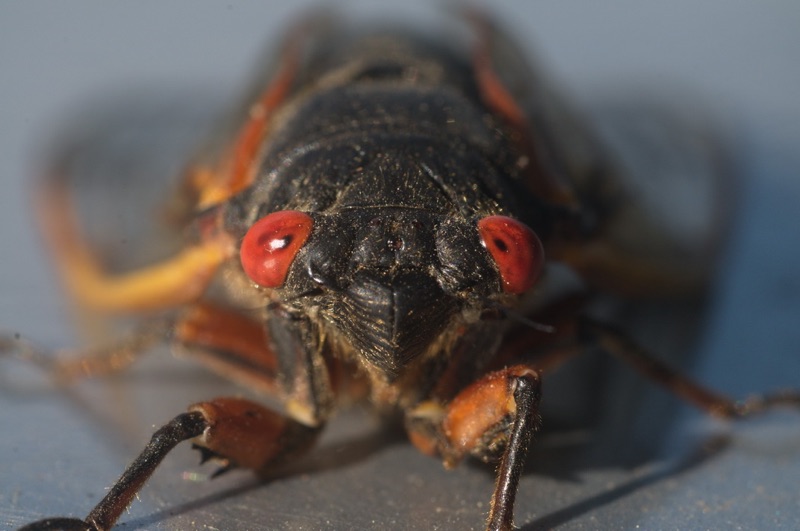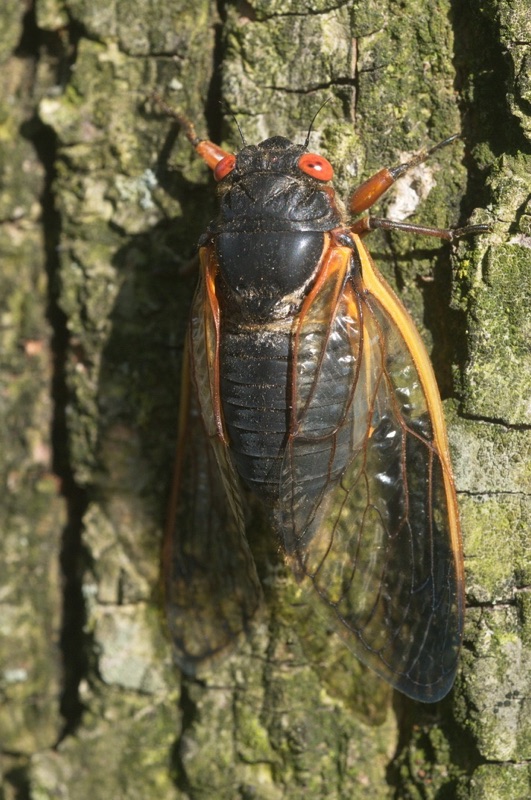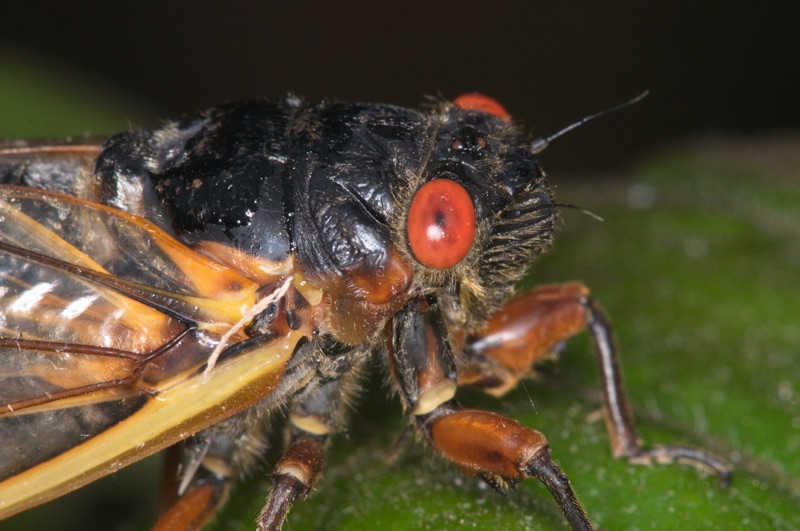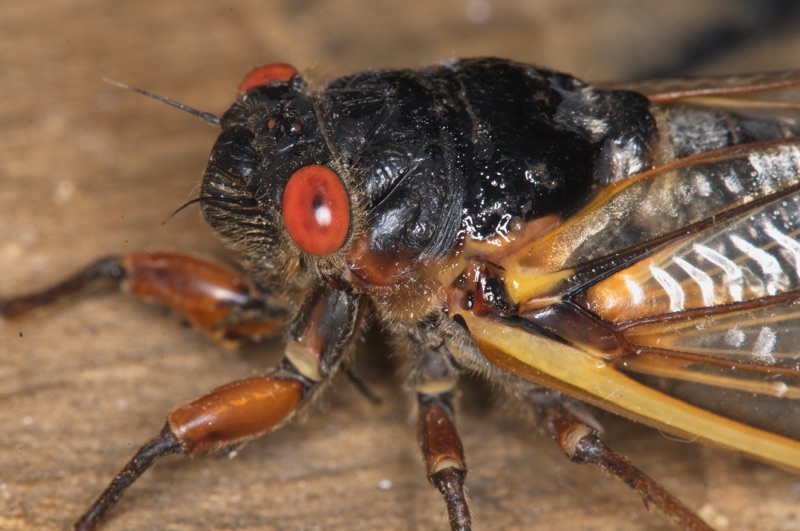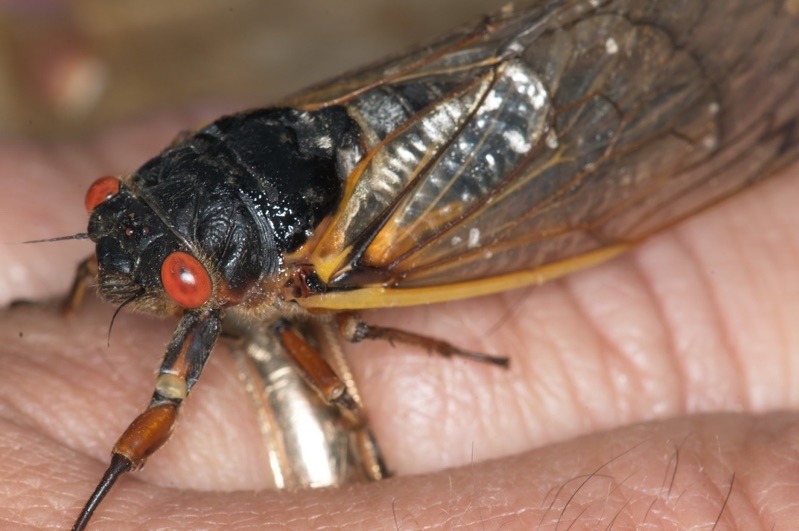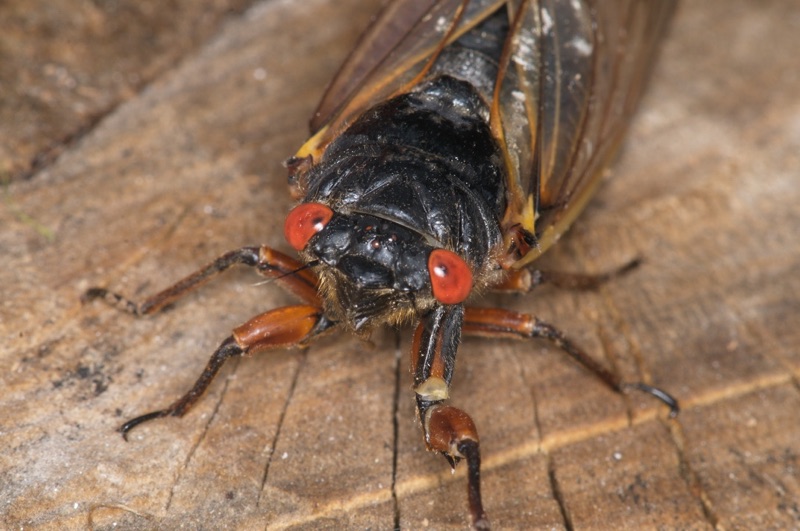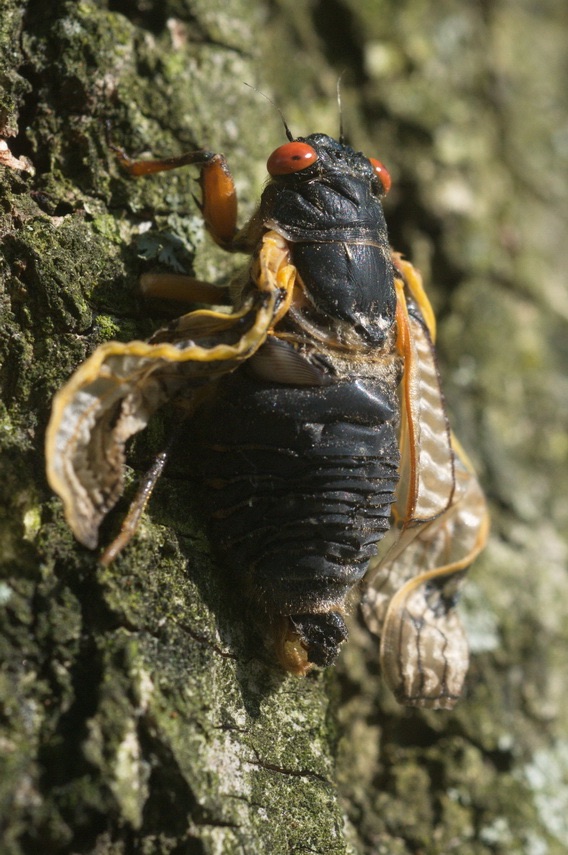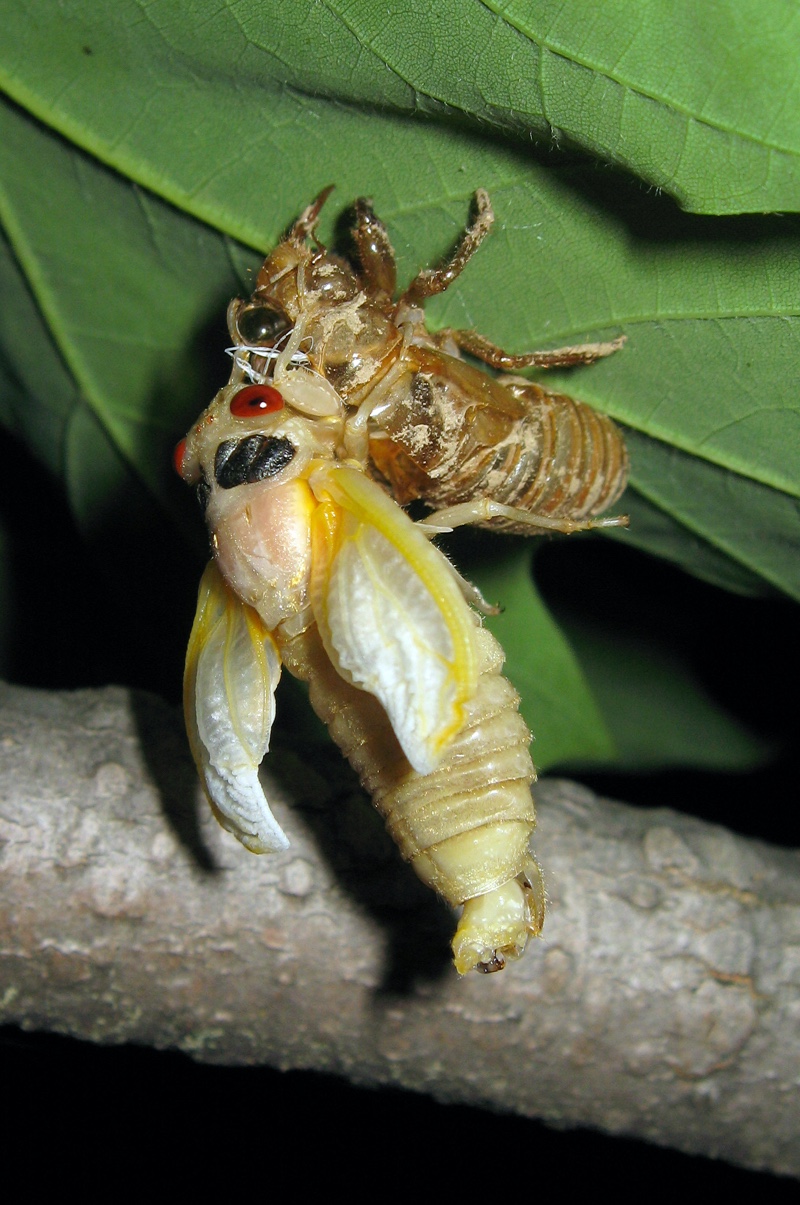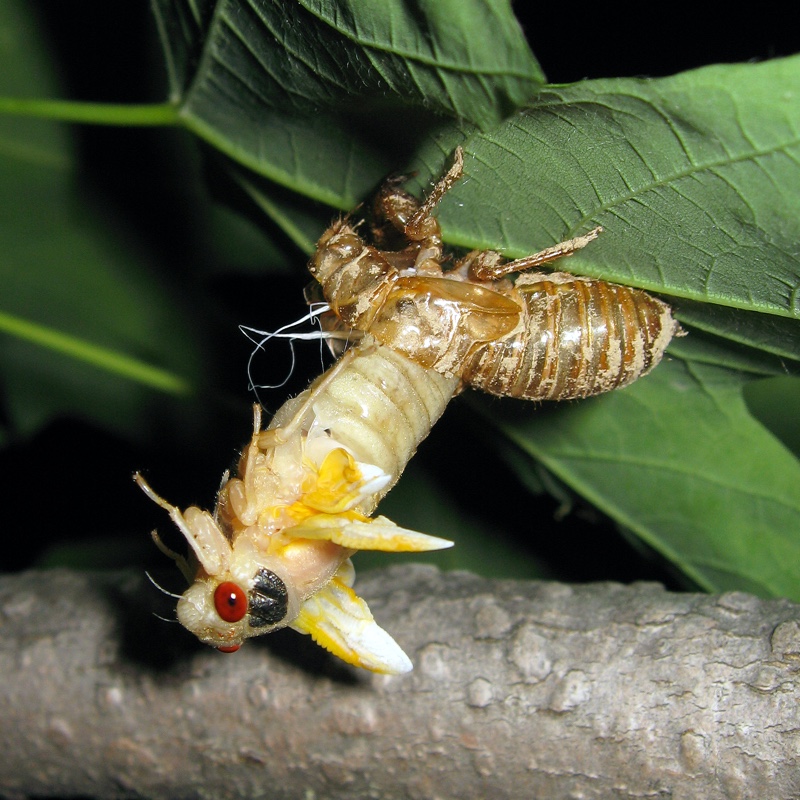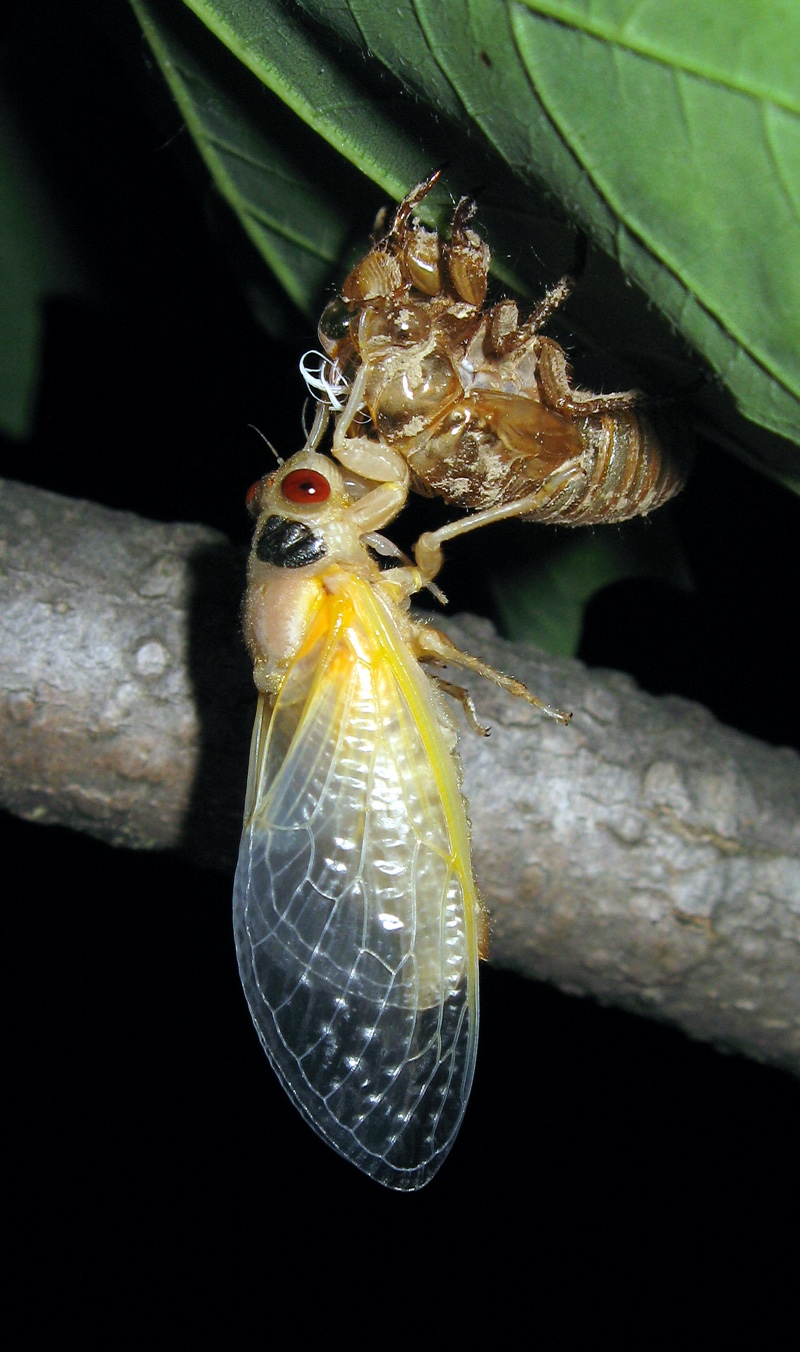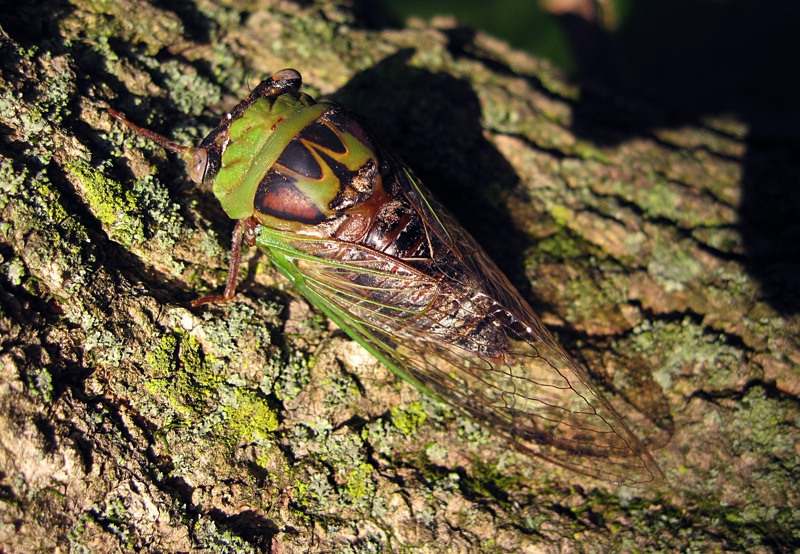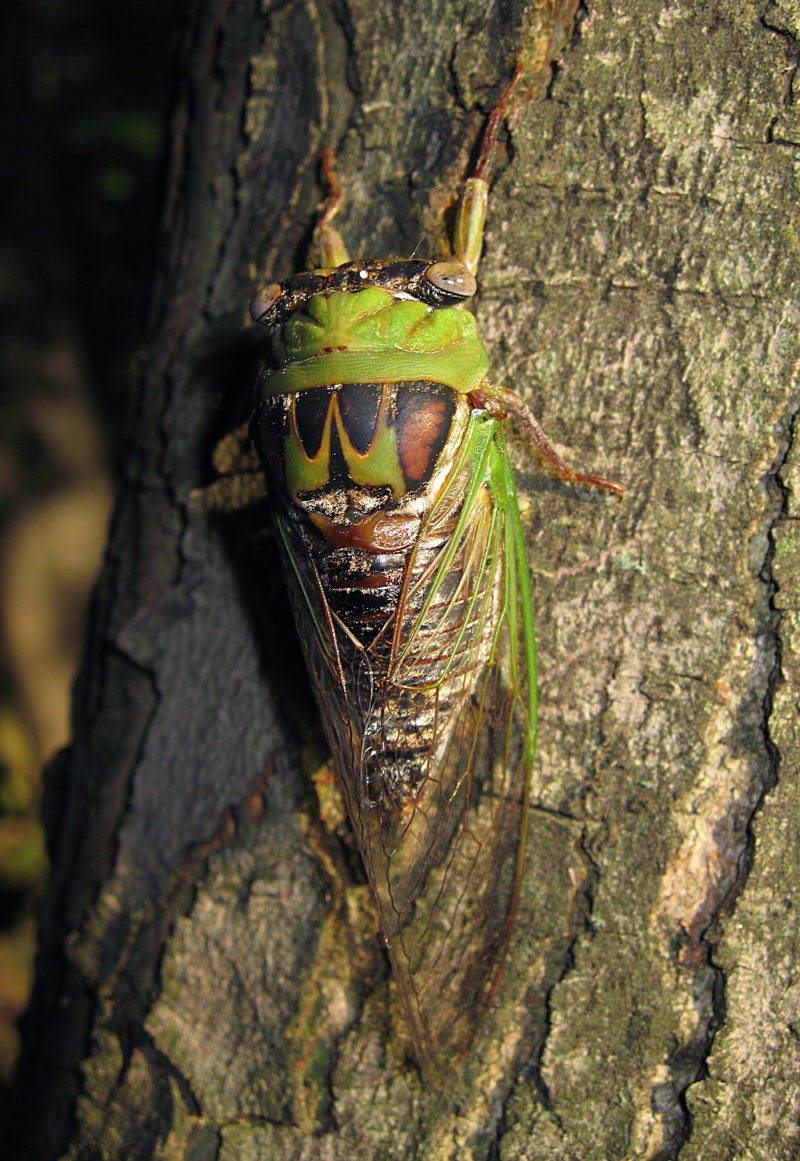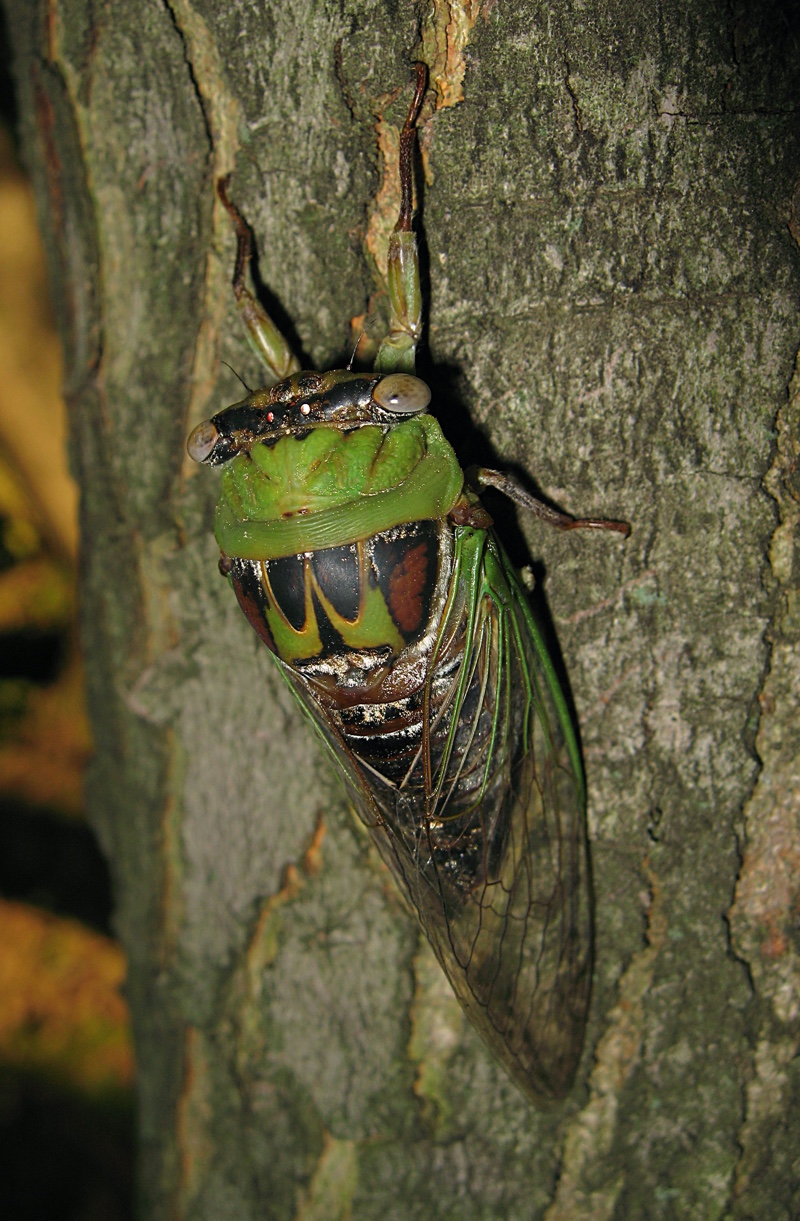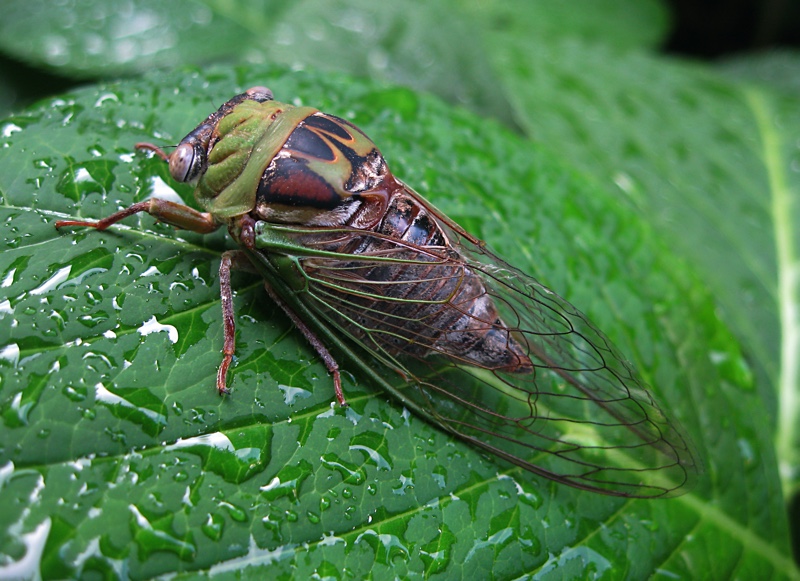Two Wednesdays ago, May 29th, my friends Roy and Michelle Troutman arrived in New Jersey. Roy has been a cicada enthusiast since he was a child growing up in Ohio. Roy has contributed many photos and videos to cicadamania.com over the years. We met in Chicago for Brood XIII in 2007, and I visited his home in Ohio for Brood XIV in 2008. This year it was my turn to return the favor for Brood II, and Roy and Michelle drove out to New Jersey.
Wednesday night we drove up to Metuchen, New Jersey to check out the emergence there. We met up with Elias Bonaros, at my Mother’s home. This location was fantastic for cicadas back in 1996, so it was worth trying again in 2013. My Mother’s yard was loaded with hundreds of cicada nymphs, teneral cicadas and adults.
Thursday, May 30th, was a beach day for Michelle, and a cicada day for Roy and I. Roy and I drove to Middlesex county to meet up with Elias. Roy and I stopped at Roosevelt Park along the way. The groves of trees near the Plays in the Park building were filled with chorusing M. septendecim. The base of one tree was absolutely covered with discarded cicada exuvia (shells).
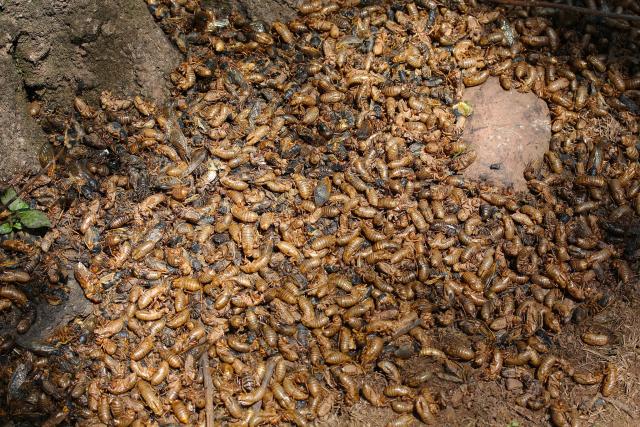
Photo by Roy.
He headed to the Thomas Edison Monument in Edison NJ. There we met Elias. At the monument, sounds of construction competed with cicada choruses, but it was easy to hear both M. septendecim and M. cassini. The burdock filled field across from the monument, was filled with teneral Magiciada.
We hit Merrill Park in Colonia next. The park had many examples of both M. cassini and M. septendecim. The highlights were the many M. septendecim with caramel colored eyes, a small pine with close to 100 teneral adults clinging to its base, and loud, synchronized M. cassini choruses.
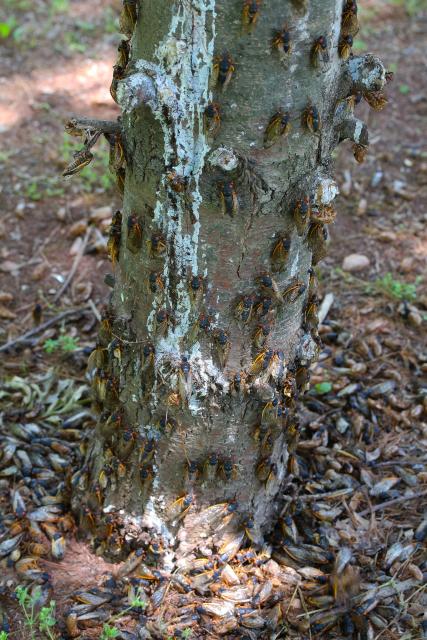
Photo by Roy.
Next we headed to a very loud M. cassini chorusing center on Guernsey Lane in Colonia. There Elias and Roy experimented with making males call and change orientation by snapping their fingers (imitating a females wing snaps). This location is where the how loud (in decibels) do periodical cicadas get video came from.
Elias used his sharp ears to locate some M. septendecula in Iselin at the corner of Wood and Willow.
We stopped by Revere Blvd in Edison, which was a hot spot 17 years ago, not much luck in 2013, but the best find was a pseudo scorpion that has hitched a ride on a cicada.
Friday, May 31st, Roy, Michelle and I drove out to Staten Island, to the Staten Island Museum. Me met Ed Johnson, and enjoyed their fantastic cicada exhibit, including the cicada timeline which features me. The Staten Island Museum has the largest collection of cicada specimens in the U.S.A., including many of the extinct Tibicen bermudiana.

Just one corner of the Staten Island Museum 17 year cicada exhibit.
We took the ferry to Manhattan for a visit to the American Museum of Natural History to see an exhibit that was using some of Roy’s cicada video. Coincidentally we exited the C line Subway that had a mosaic of a cicada.
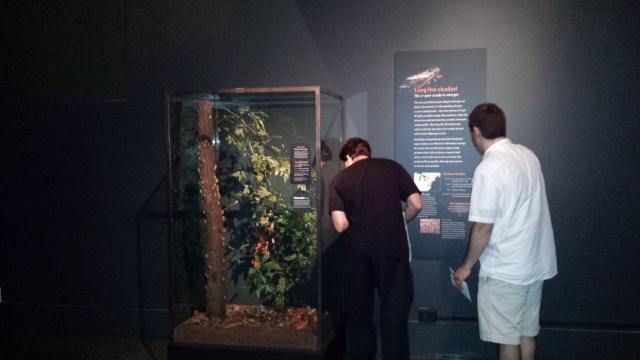
Elias and Roy examining a periodical cicada display at the AMNH.

Roy and Elias under the subway cicada mosaic.
Then it was back to the Staten Island Museum for an event called The Joy of Six Legged Sex which was about insect mating behavior, specifically cicadas. John Cooley of Cicadas @ UCONN and Ed Johnson of the Staten Island Museum spoke. David Rothenberg was also in attendance.
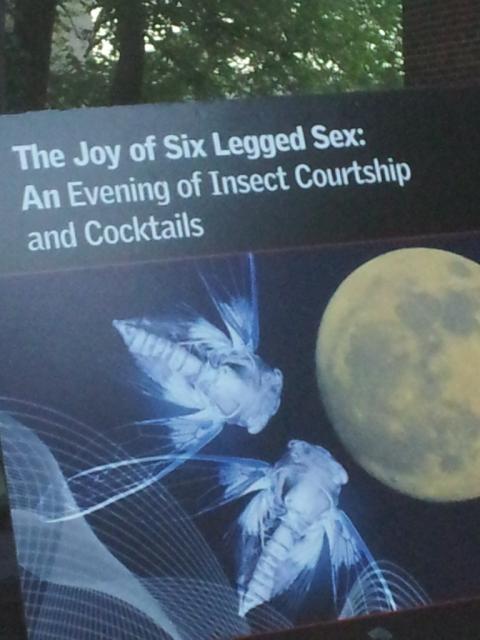
A sign for the event at the Staten Island Museum.
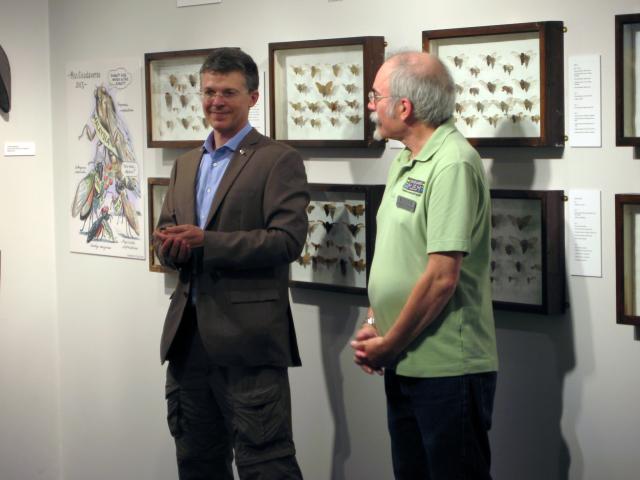
John Cooley (left) and Ed Johnson (right).
Saturday, June 1st, Roy and Michelle left for Ohio. Later that day I met up with John Cooley, Jin Yoshimura, David Rothenberg, the New York Times, and friends. Read about that adventure: David Rothenberg, John Cooley and the New York Times.
Sunday, June 2nd, back to Staten Island to meet Chris Simon and Elias. More about that adventure in these posts:
